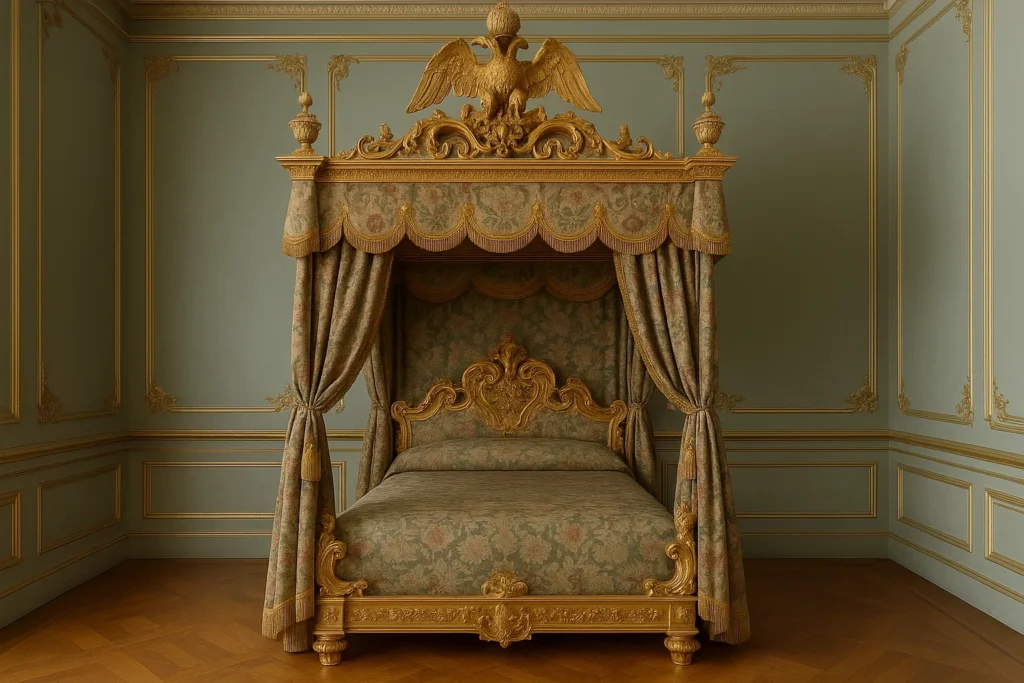When you think of Catherine the Great, the 18th-century Russian empress known for her political acumen and cultural influence, one may not immediately think of furniture. However, her reign significantly impacted art, design, and architecture in Russia, leading to the creation of some of the most exquisite and luxurious furniture of the era. Among the most iconic pieces from this period is the bed Catherine the Great furniture, a perfect reflection of the opulence and sophistication that characterized her court.
The Legacy of Catherine the Great in Furniture Design
Catherine the Great (1729–1796) was not only a ruler but a patron of the arts who sought to bring European sophistication to Russia. She embraced the Rococo and Neoclassical styles that were prevalent in France and other parts of Europe, incorporating these trends into Russian imperial design. Under her reign, Russian furniture became synonymous with grandeur and refinement, and pieces crafted during this time remain symbols of wealth, power, and taste.
Her personal preferences in furniture design leaned heavily toward the use of luxurious materials, intricate craftsmanship, and elaborate ornamentation. Catherine the Great furniture, especially her beds, epitomized the high standards of the Russian imperial court. They were more than just functional pieces — they were statements of power and prestige.
The Design of Catherine the Great’s Beds
The bed Catherine the Great furniture stands as a testament to both her royal taste and the superior craftsmanship of the period. Empress Catherine was known for her love of ornate, yet functional designs. Beds from her time were often custom-made to suit the imperial palaces, particularly Tsarskoye Selo, The Hermitage, and The Winter Palace in St. Petersburg. These beds were lavishly decorated, often incorporating elements like:
1. Lavish Upholstery
Catherine’s beds were typically upholstered with luxurious fabrics such as velvet, silk, or damask. Rich, deep colors like royal blue, gold, and crimson were common, with intricate patterns woven into the fabric. These fabrics added a sense of warmth and splendor, making the bed not just a place for rest but a statement piece within the bedroom.
2. Intricate Woodwork and Gilding
The craftsmanship behind these beds was extraordinary. Many of Catherine’s royal beds were made from rich, dark woods like mahogany, with ornate carvings of floral motifs, scrolls, and cherubs. The wood was often gilded with gold, enhancing the luxurious aesthetic. Gilding was particularly prominent in the bed frames and headboards, where the gold detailing highlighted the grandeur of the piece.
3. Opulent Canopy and Drapery
Beds during Catherine’s reign were often designed with grand canopies that added an extra level of opulence. The canopies were draped with heavy fabrics, often adorned with tassels, fringes, and intricate embroidery. This was not just for decoration — the canopy and draperies also served to offer privacy, as royal chambers were often shared by attendants and courtiers.
4. Large, Regal Scale
Beds were typically large in scale, as they were meant to convey power and luxury. The dimensions of these royal beds would often exceed what was typical for most furniture of the time, ensuring that the bed became the focal point of the room. The headboards were typically tall and imposing, further adding to the sense of grandeur.
Iconic Examples of Catherine the Great’s Beds
The beds Catherine the Great furniture can still be found in various palaces and museums today, where they stand as enduring examples of the empire’s royal luxury. One notable example is the bed in the Catherine Palace at Tsarskoye Selo, which is a masterpiece of Rococo design. This bed features a gilded wooden frame with elaborate carvings, a lavish canopy, and exquisite upholstery that mirrors the opulence of Catherine’s court.
Another iconic piece is the Empress’s Bed in the Winter Palace, which was a key feature in her personal suite. The bed was designed with a blend of Rococo curves and neoclassical elements, showcasing Catherine’s ability to blend European design influences into Russian royal style.
The Influence of Catherine’s Beds on Modern Design
The influence of Catherine the Great furniture, particularly her bed designs, can still be seen in modern interior design and antique collections. Today, many designers and collectors look to the grandeur of imperial furniture as inspiration for luxury bedroom designs. Elements like gilded bed frames, rich upholstery, and grand canopies are often incorporated into high-end furniture collections that aim to evoke the opulence of imperial Russia.
While these pieces may no longer be reserved for royalty, they continue to serve as symbols of elegance and refinement. High-end interior designers and antique enthusiasts still seek out beds with similar ornate features, as they are not just functional items but works of art that carry historical significance.
Final Thoughts
The bed Catherine the Great furniture is more than just a piece of furniture — it’s a representation of an era that celebrated excess, beauty, and power. Crafted with attention to detail and an unwavering commitment to luxury, these beds continue to symbolize the grandeur of Russia’s imperial past. Whether displayed in palaces or appreciated in museums, Catherine the Great’s furniture legacy, particularly her beds, remains a testament to the timeless allure of royal design.
For those who appreciate history, fine craftsmanship, and timeless elegance, Catherine the Great furniture represents the pinnacle of opulence, showcasing a style that continues to captivate generations.
